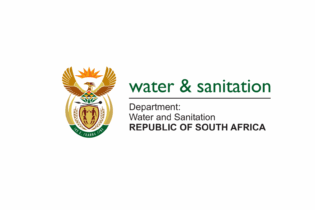Minister of Public Works and Infrastructure – Sihle Zikalala – recently attended the Council of Built Environment’s Climate Change Indaba. Here are 7 takeaways from his keynote address:

1) A healthy environment is the basis for a healthy economy
Clean air, water, biodiversity, and sustainable practices drive industries, attract tourism, and reduce healthcare costs. Moreover, a resilient environment mitigates climate change impacts and fosters long-term stability, influencing global trade and promoting economic growth.2) Integrated climate-responsive urban planning
The interplay of green infrastructure, compact urban layouts, and energy-efficient buildings must become the hallmark of our urban planning efforts. Weaving together the threads of climate science, architecture, and urban design will create cities that can withstand the challenges of a changing climate.3) Inclusive stakehoder engagement
Closing the gap between policy and practice requires the active involvement of all stakeholders. Governments, private enterprises, local communities, and academia must forge robust partnerships that facilitate knowledge exchange, technology transfer, and resource sharing.4) Empowering regulatory frameworks
Incentives for green buildings, renewable energy integration, and climate-resilient infrastructure must be woven into our legal fabric.5) Councils and institutes have a role to play
The Environmental Assessment Practitioners Association of South Africa (EAPASA) is mandated to provide quality assurance regarding EAPs.As a regulator, the Engineering Council of South Africa (ECSA) regards engineering professionals to be vital in responding to climate change through various strategies and solutions. It is engineers who are at the forefront of designing energy-efficient buildings, Carbon Capture and Storage (CCS) technologies, Smart Grids, Sustainable Water Management, Waste Recycling, and Climate Modelling.
The Geomatics profession is normally the first one on the scene of disaster. Within the Geomatics Field, the technology has advanced so much that within a few hours, we are able to obtain a detailed 3D mapping of the site of disaster. This is possible through the use of both Aerial Photography, Lidar Technolongy, Drones, 3D Mobile and terrestrial Scanners. Disaster Managers can use the 3D Imagery to plan Early Warning Systems, identify areas that can cave in and destroy properties and harm people. Today, Engineers are able to use this 3D Imagery to design bridges and roads that are more resilient to disasters. The South African Council for the Architectural Profession (SACAP) is an important statutory regulatory body which plays a vital role in sustainable designs, regulating and ensuring the highest standards within the architectural profession. It is encouraging to see architectural professionals embracing sustainable principles and making them integral to their work.







